Foot & Ankle Conditions
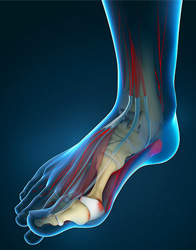
Foot & ankle problems are common and are likely to affect most people at some point. Fortunately the vast majority of problems are very treatable.
Here at The Suffolk Fook Foot & Ankle Clinic we offer specialised Consultant Orthopaedic Foot & Ankle Surgeon led care. We treat patients in a multi-disciplinary setting and work closely with leading local Physiotherapists and Podiatrists.
When surgery is required we prefer minimally invasive techniques wherever possible to speed recovery time and limit risks.
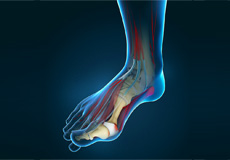
Bunions - Hallux Valgus
This is a swelling at the base of the big toe and is associated with the toe leaning towards its neighbour. It is commonly called a bunion. The lump may be painful, and make shoe wear difficult. When standard non-surgical treatments fail then surgery may be indicated.
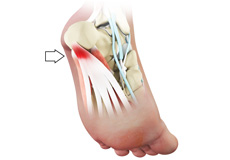
Plantar Fasciitis
This is the most common cause of chronic heel pain. It generally settles with Physiotherapy. More stubborn cases benefit from further evaluation. Several treatment options exist including shockwave therapy a promising new treatment.

Sports Injuries
Ankle sprains, cartilage injuries, instability and stress fractures are common sports injuries. We work with leading local Physiotherapists to provide a multi-disciplinary approach to athletes of all levels.
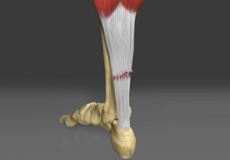
Achilles Rupture
Achilles tendon ruptures are serious injuries that require urgent diagnosis and appropriate treatment.

Achilles Tendonitis
Tendonitis means inflammation and swelling of a tendon. The Achilles is frequently affected.

Deformed Toes
There are several common types of lesser toe deformity- including mallet, hammer, claw and cross-over toe. The big toe is referred to as the hallux and the other toes are referred to as the lesser toes.
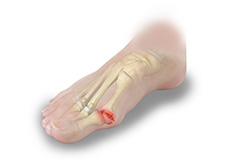
Hallux Rigidus - Big Toe Arthritis
This is arthritis of the big toe joint. It is very common and can lead to significant swelling, pain and stiffness. The traditional surgical treatment was a joint fusion but there are now other viable surgical treatment options.
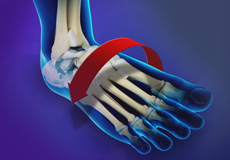
Ankle Instability
Ankle sprains are amongst the most common of all injuries. Fortunately the majority settle with physiotherapy. Ocasionally the ankle remains painful or feels unstable and further investigation and treatment is necessary.
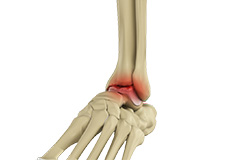
Ankle Arthritis
Compared to the hip and knee ankle arthritis is fortunately much less common. It can lead to significant swelling, pain and stiffness. The traditional surgical treatment was a joint fusion but there are now other viable surgical treatment options.

Metatarsalgia
This means pain in the forefoot- it is generally felt in the sole and is often sharp. There are a variety of causes. It may feel like walking on pebbles or having a stone in the shoe. Effective treatment requires a correct diagnosis which can require in-depth investigation.
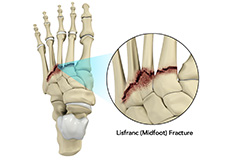
Midfoot Arthritis
This causes pain and swelling in the middle of the foot. Sometimes changes occur to the foot shape itself. Orthotics and joint injections often help. If not surgical fusion can be very successful.
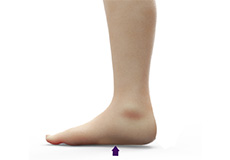
Flat Feet
Flat feet are common affecting 20% of the population. The vast majority of these are normal and casue no symptoms. However several conditions can cause painful flat feet to develop.

Tendinopathy
This means a worn tendon. Just as joints can undergo 'wear and tear' so can tendons. This can cause pain, swelling and occasionally changes to the foot shape / structure. It is sometimes referred to as tendinitis.

High Arches
This is also known as cavovarus. It is the opposite of being flat footed. It often causes no issues but can lead to problems with ankle instability, stress fractures and the tendons.
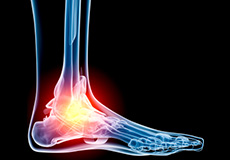
Trauma - Fractures
Injuries to the foot and ankle are common. Many of these injuries require urgent specialised care and treatment.
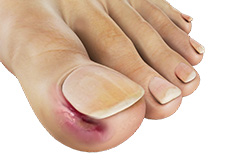
Ingrown Toenails
Ingrown nails tend to be too curved- digging into the skin at the sides. This causes pain, swelling, inflammation and infections. If this does not settle with Podiatric nail care then surgery can help.

Ganglions & Cysts
The foot is commonly affected by a variety of cysts and other lumps and bumps. If these are painful and causing problems with shoe wear then surgical removal is an option.
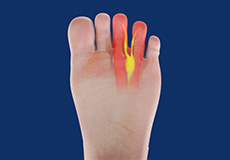
Morton's Neuroma
This is a common cause of pain in the forefoot and is caused by a swelling of the small nerve between the toes. It causes pain, numbness and tingling between the toes.
